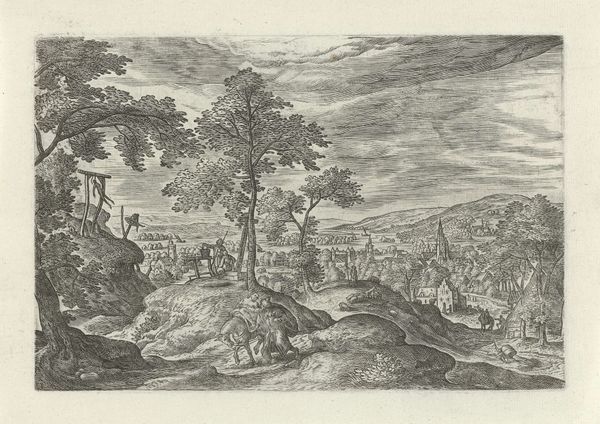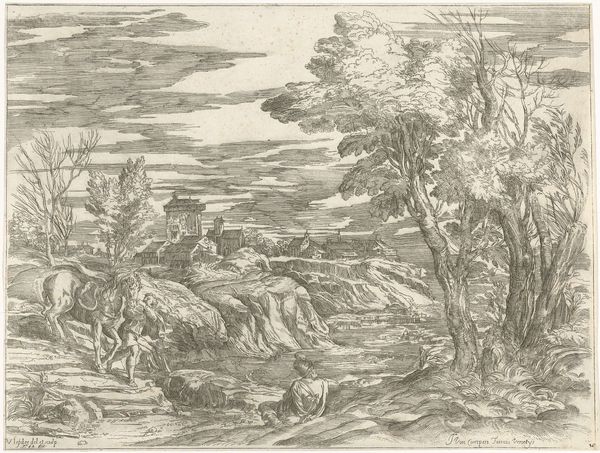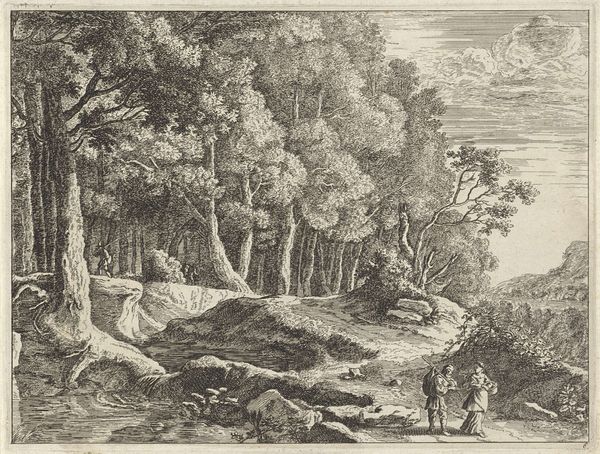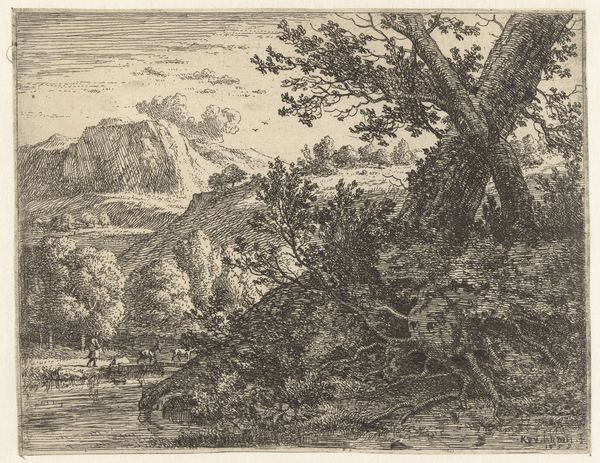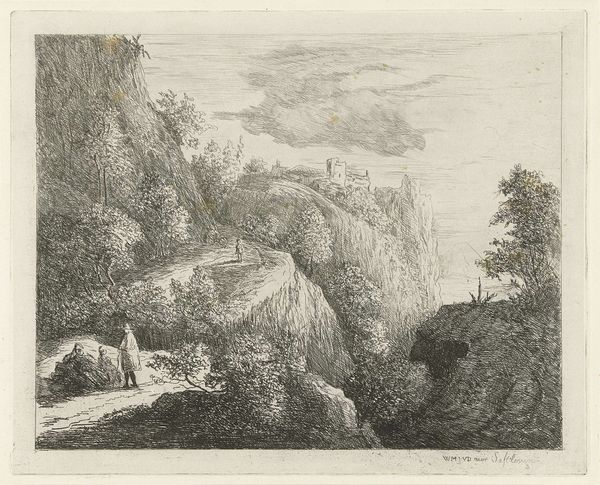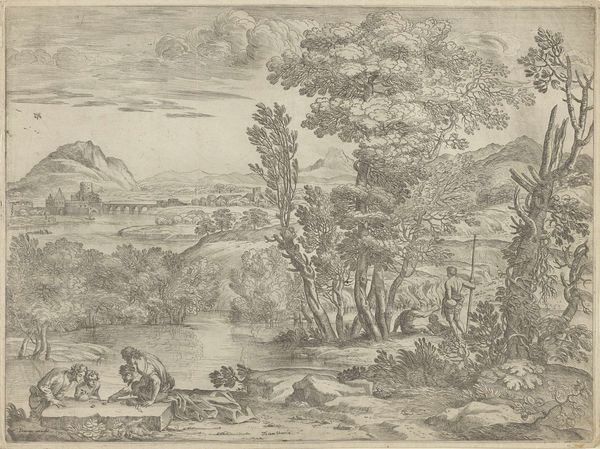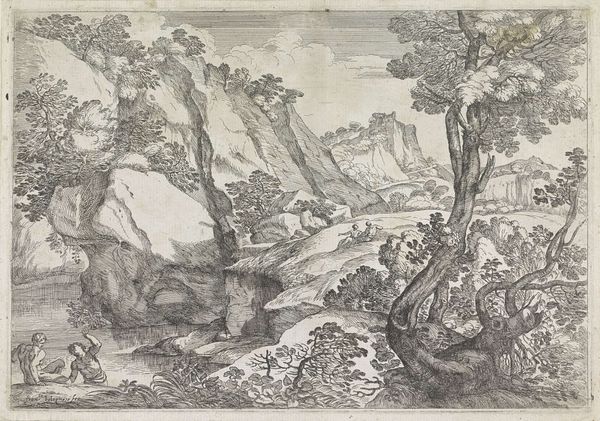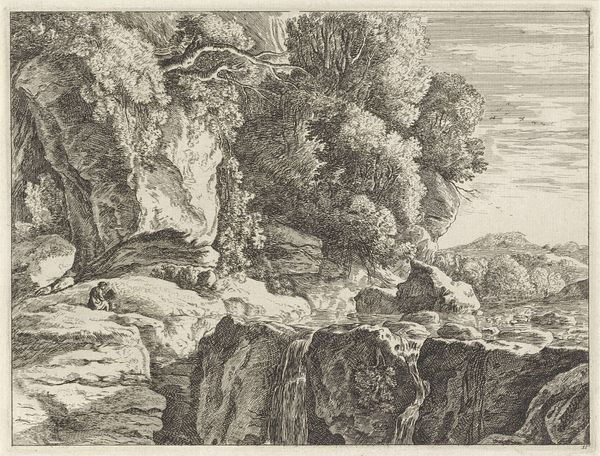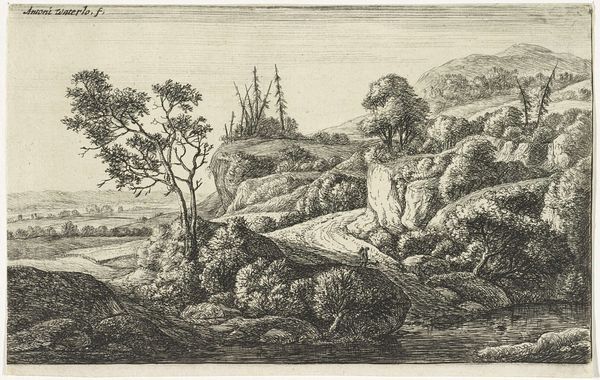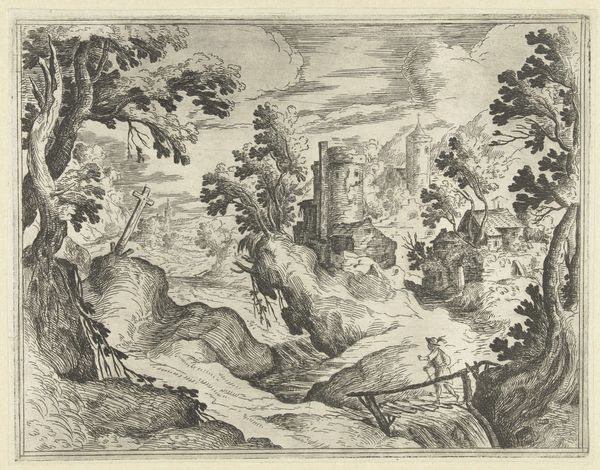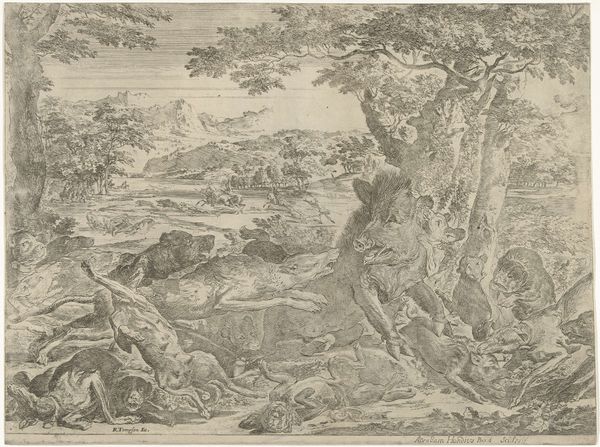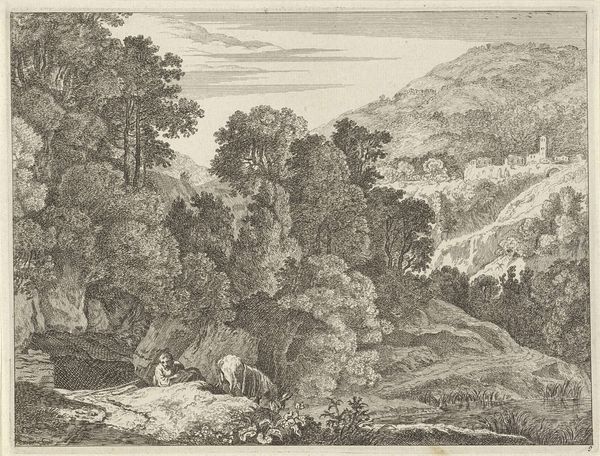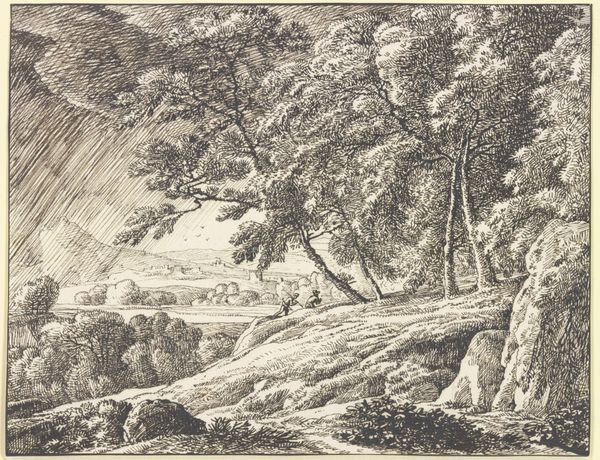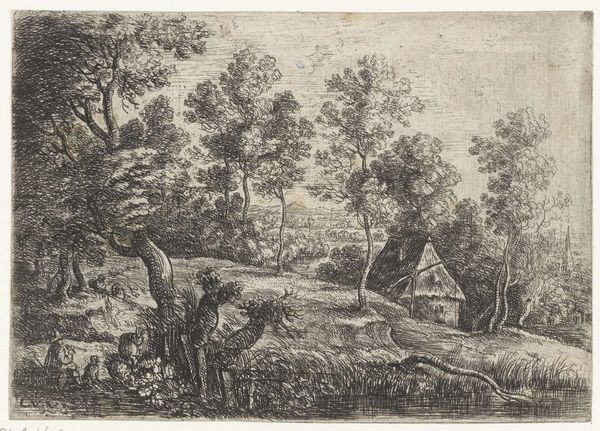
print, etching, engraving
#
baroque
# print
#
etching
#
landscape
#
form
#
line
#
engraving
#
realism
Dimensions: height 223 mm, width 308 mm
Copyright: Rijks Museum: Open Domain
Curator: Giovanni Francesco Grimaldi's etching, "Landschap met verzonken weg," made sometime between 1637 and 1691, presents a classically composed landscape. The density of detail initially overwhelms, doesn’t it? Editor: It does. It's quite fascinating actually. My initial impression is one of controlled chaos. All of those meticulous lines seem to suggest a tension between wild nature and a sense of ordered observation, right? It evokes the complex human relationship with land. Curator: Precisely. Landscapes like these served multiple functions. They reflect the aesthetic tastes of the period—the Baroque interest in both realism and drama—but they also embody prevailing attitudes toward nature and ownership. They portray an idealized view but also implicitly represent control. We need to consider the viewers, patrons and power dynamics embedded in their consumption. Editor: Absolutely. Looking closer, the sunken road itself seems almost like a metaphor. Is it suggesting hidden paths, societal structures that aren’t immediately visible, the erosion of time perhaps? Roads facilitated control and access, didn’t they? I see so many stories within its layers. Curator: Exactly! The “sunken” quality here offers such potential for interpretation regarding the social narratives surrounding land use during this time, not only as relates to power but also the environmental cost of our pursuits, how resources and communities were invisibilized during this era. Editor: That’s an important point. Consider the absence of certain populations in the landscape too. Whose labour shaped it and from which perspective are we positioned? Curator: These are some of the questions that we can ask ourselves as we engage with art from previous centuries. Considering our relationship with them now. It invites the conversation and the opportunity for reevaluation. Editor: A fruitful dialogue between the artwork and the present—bringing forward not just artistic details but wider truths. Thank you. Curator: The pleasure was all mine.
Comments
No comments
Be the first to comment and join the conversation on the ultimate creative platform.
